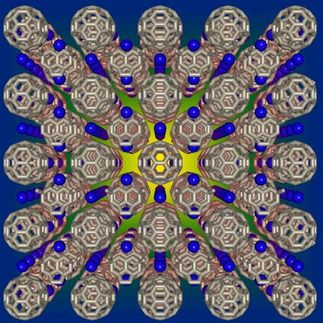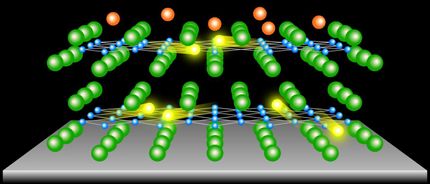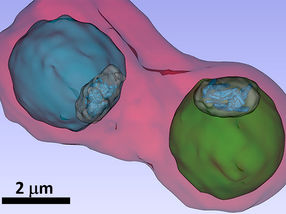Los Alamos scientists see new mechanism for superconductivity
Research explains unconventional superconductivity without phonons
Los Alamos National Laboratory researchers have posited an explanation for superconductivity that may open the door to the discovery of new, unconventional forms of superconductivity. In a Nature letter, research led by Tuson Park and Joe D. Thompson describes a new explanation for superconductivity in non-traditional materials — one that describes a potentially new state of matter in which the superconducting material behaves simultaneously as a nonmagnetic material and a magnetic material.
Superconducting materials carry a current without resistance, usually when cooled to temperatures nearing the liquid point of helium (nearly 452 degrees below zero Fahrenheit). Superconductors are extremely important materials because they hold promise for carrying electricity from one place to another without current loss or providing indefinite electric storage capacity. However, the cost of cooling materials to such extremely low temperatures currently limits the practicality of superconductors. If superconductors could be designed to operate at temperatures closer to room temperature, the results would be revolutionary.
Traditional theories of superconductivity hold that electrons within certain nonmagnetic materials can pair up when jostled together by atomic vibrations known as phonons. In other words, phonons provide the "glue" that makes superconductivity possible. Park and his colleagues now describe a different type of "glue" giving rise to superconducting behavior.
Park and his colleagues cooled a compound of Cerium, Rhodium and Indium to just above absolute zero, nearly minus 459 degrees Fahrenheit. At this temperature, the material exhibits superconducting behavior. However, they also subjected the crystal to pressure changes and a magnetic field to perturb the alignment of electrons within the material.
"We introduced very high quantum fluctuations in the material," Park said. "In other words, we made the electrons like a traffic jam, where it would be very difficult for them to move."
This electronic traffic jam would discourage electron pairing by phonons; nevertheless, the material continued to exhibit superconducting behavior.
Based on the material's behavior under different pressures and temperatures, researchers believe that the material reaches a quantum critical point near absolute zero. At this quantum critical point, the material retained properties of a metal with highly ordered electrons and highly disordered ones — a previously undescribed state of matter.
Park and his colleagues believe that this quantum critical point provides a mechanism to pair electrons into a quantum state that gives rise to superconducting behavior. In other words, the research helps explain a mechanism for superconductivity without phonons.
"This quantum critical point could be analogous to a black hole," said Park. "We can see what is happening at or near the event horizon—superconductivity—but we cannot yet see inside to understand why."
A new mechanism for the electron-pairing glue that gives rise to superconductivity could allow researchers to design new materials that exhibit superconducting materials at higher temperatures, perhaps even opening the door to the "Holy Grail" of superconducting materials — one that works at room temperature.
Most read news
Topics
Organizations
Other news from the department science

Get the chemical industry in your inbox
By submitting this form you agree that LUMITOS AG will send you the newsletter(s) selected above by email. Your data will not be passed on to third parties. Your data will be stored and processed in accordance with our data protection regulations. LUMITOS may contact you by email for the purpose of advertising or market and opinion surveys. You can revoke your consent at any time without giving reasons to LUMITOS AG, Ernst-Augustin-Str. 2, 12489 Berlin, Germany or by e-mail at revoke@lumitos.com with effect for the future. In addition, each email contains a link to unsubscribe from the corresponding newsletter.














![[Fe]-hydrogenase catalysis visualized using para-hydrogen-enhanced nuclear magnetic resonance spectroscopy](https://img.chemie.de/Portal/News/675fd46b9b54f_sBuG8s4sS.png?tr=w-712,h-534,cm-extract,x-0,y-16:n-xl)









































